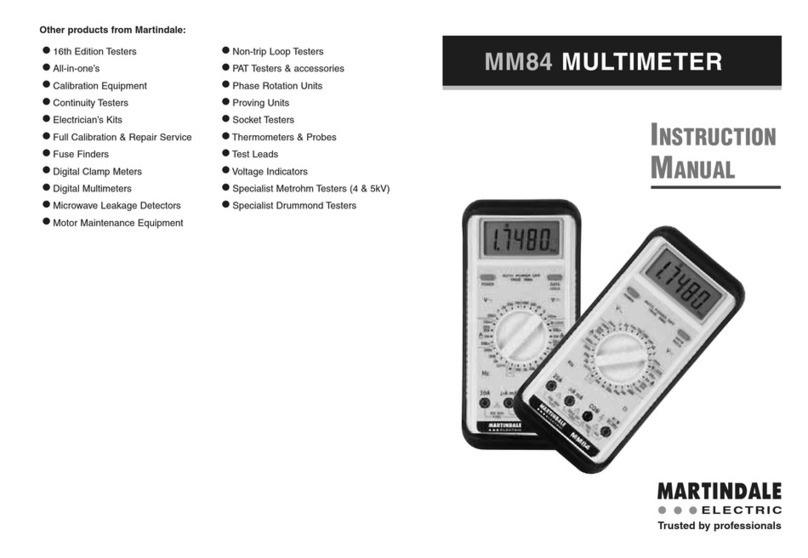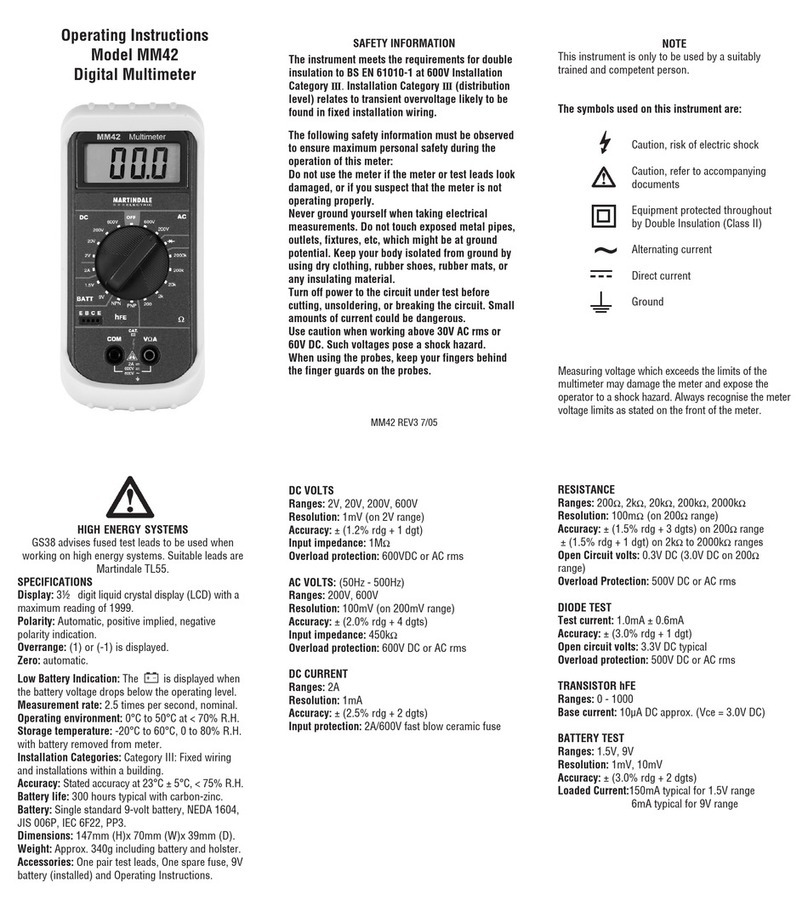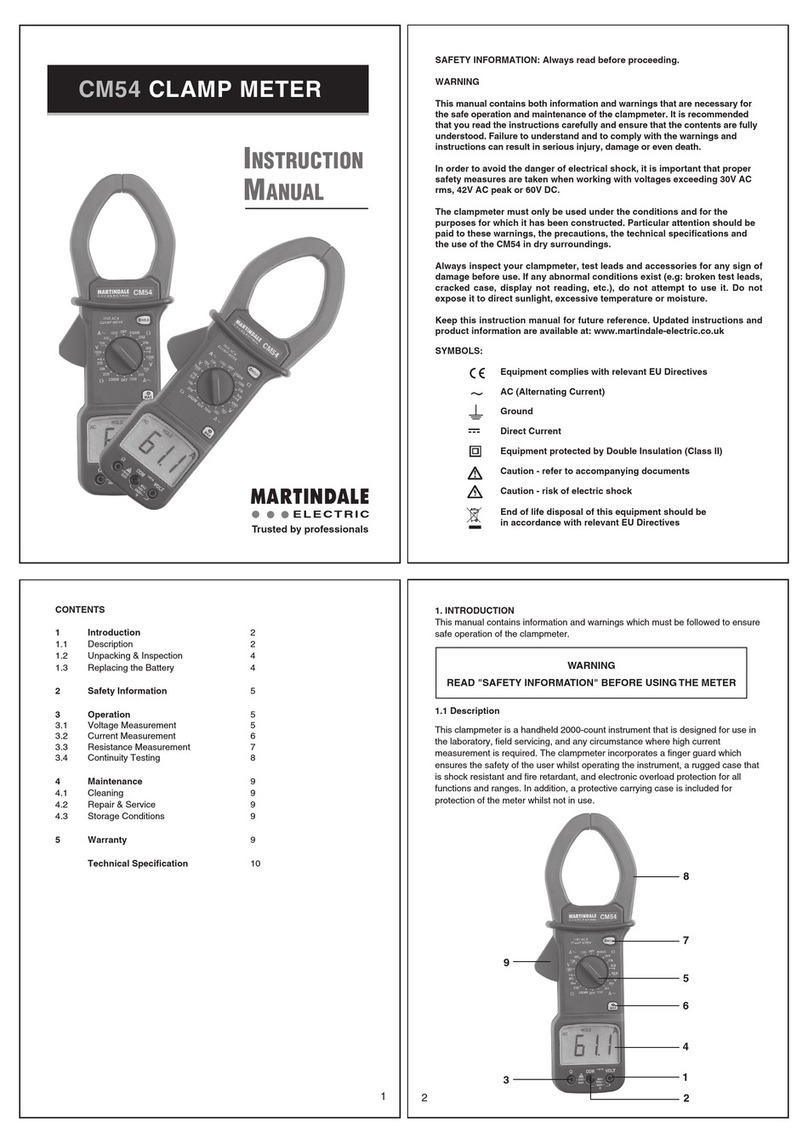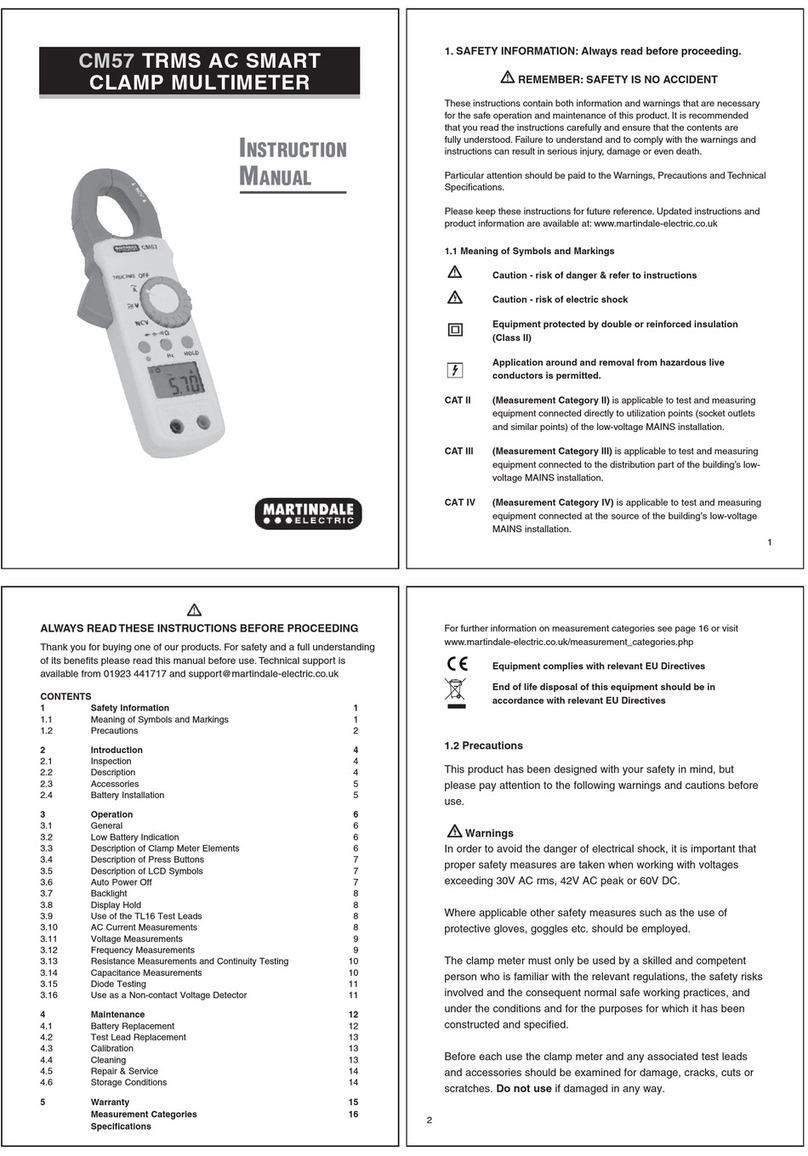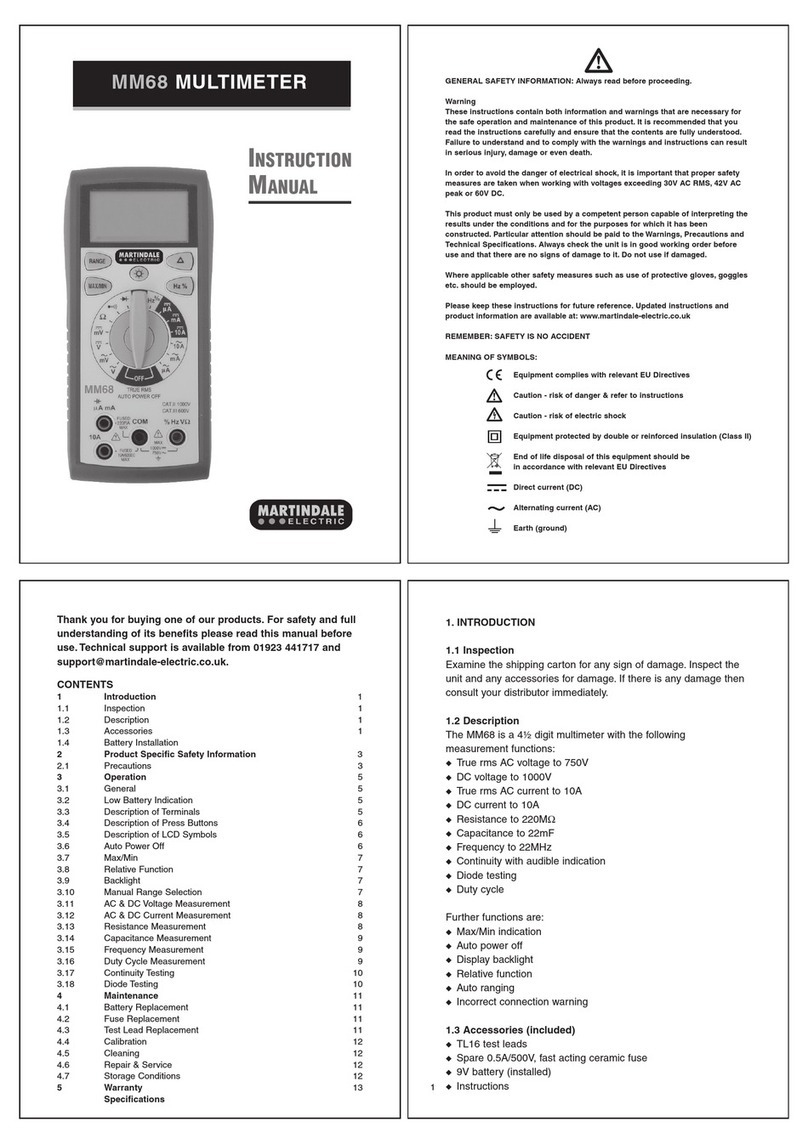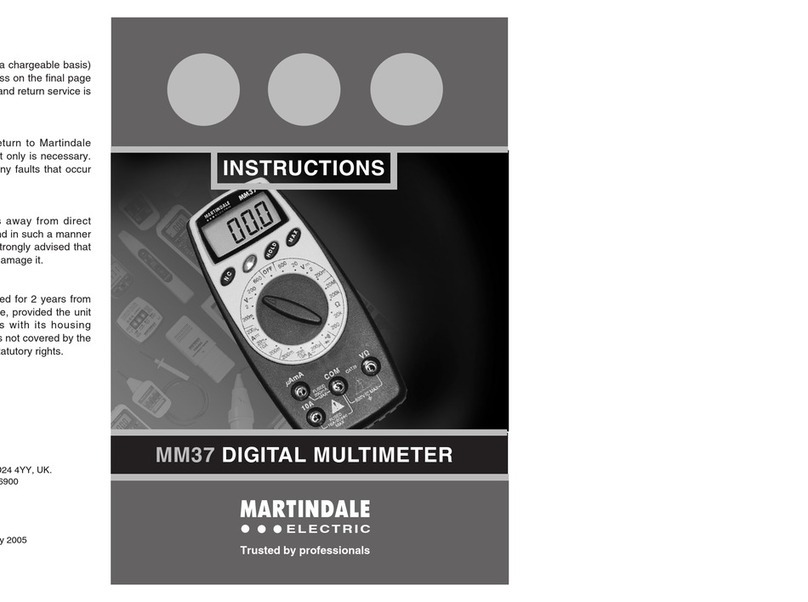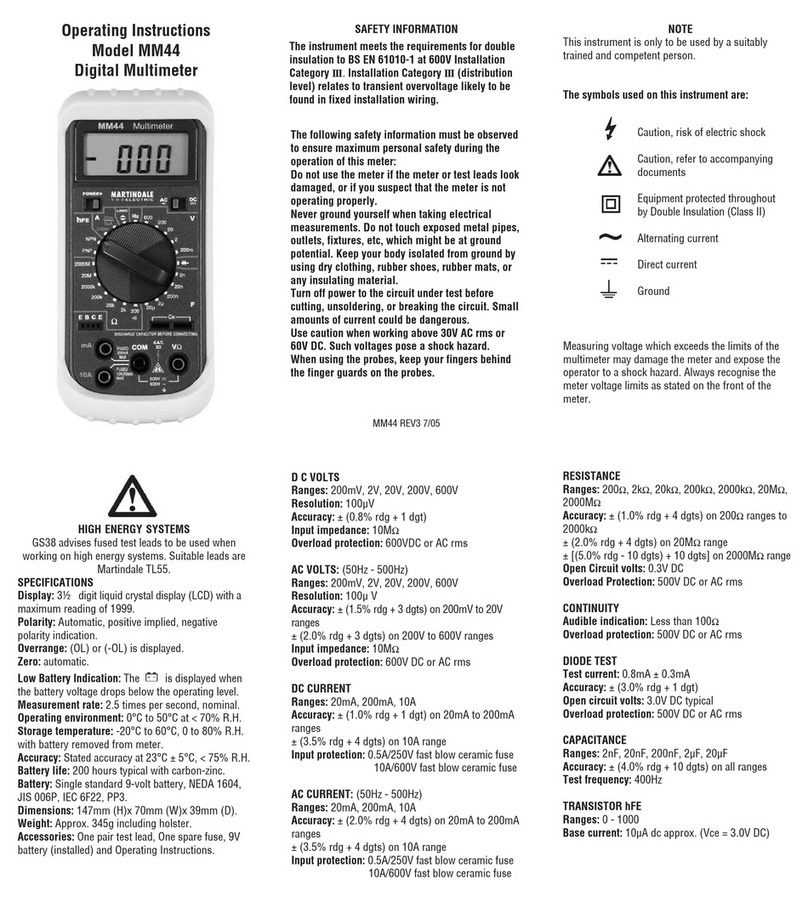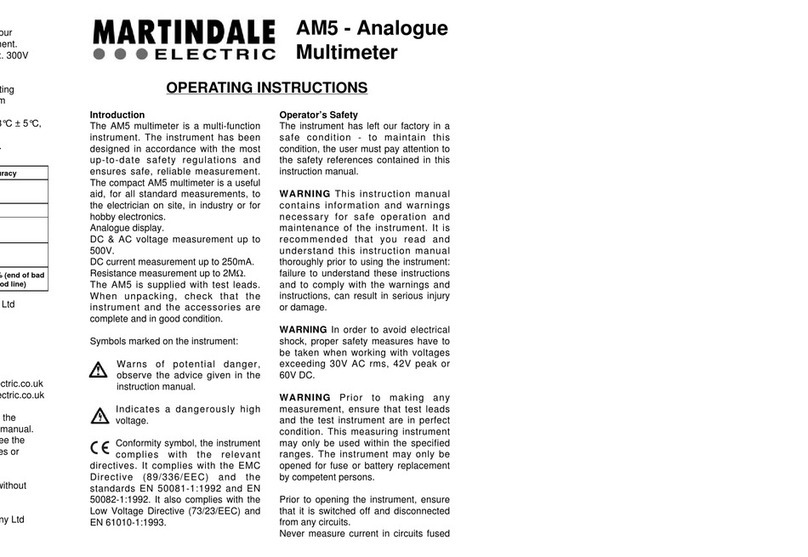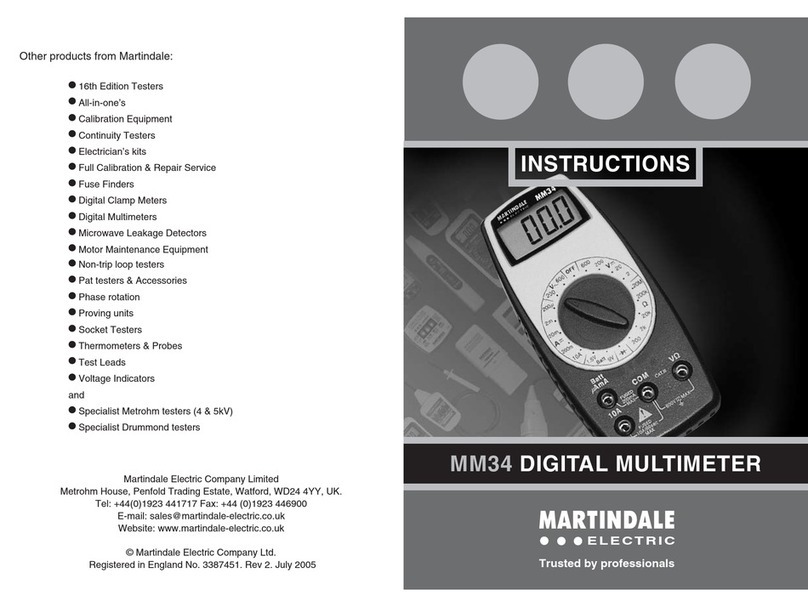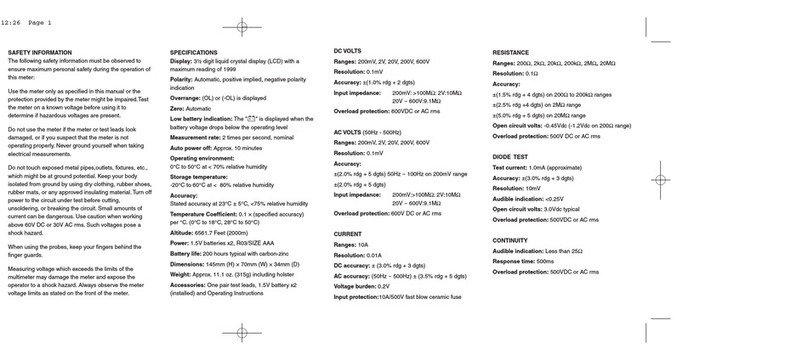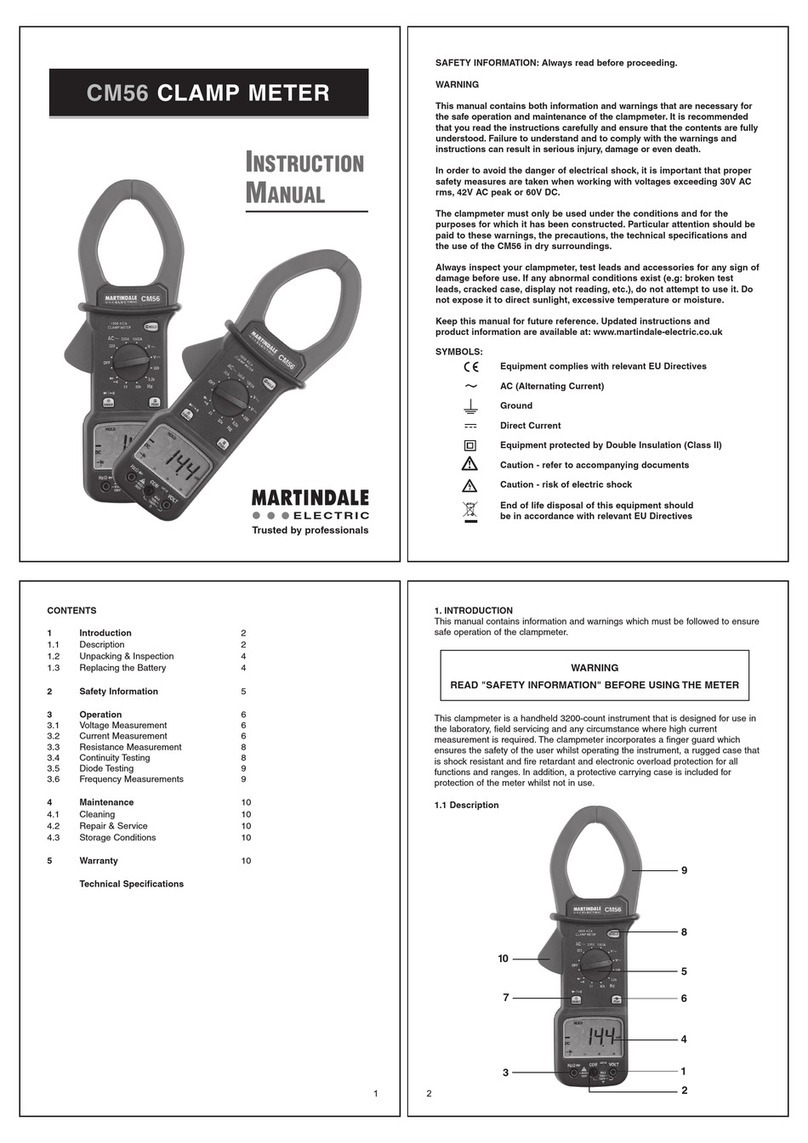7
MAN x ½ the instrument performs the test with a leakage current at ½x
the value of the rated current indicated, with the leakage current
in phase with the voltage or phase shifted by 180° with respect
to the voltage.
MAN x 1 the instrument performs the test with a leakage current at 1x the
value of the rated current indicated, with the leakage current in
phase with the voltage or phase shifted by 180° with respect to
the voltage.
MAN x 2 the instrument performs the test with a leakage current at 2x the
value of the rated current indicated, with the leakage current in
phase with the voltage or phase shifted by 180° with respect to
the voltage.
MAN x 5 the instrument performs the test with a leakage current at 5x the
value of the rated current indicated, with the leakage current in
phase with the voltage or phase shifted by 180° with respect to
the voltage
AUTO the instrument performs the test automatically with a leakage
current at ½x, 1x, 5x the value of the rated current indicated with
the leakage current in phase with the voltage and then phase
shifted by 180° with respect to the voltage. Recommended test.
.
RAMP Mode the instrument performs the test with a steadily increasing
leakage current, with the leakage current in phase with the
voltage or phase shifted by 180° with respect to the voltage.
Use this test to measure the tripping current.
UtMode the instrument performs the test with a leakage current equal to
½ the value of the rated current indicated and calculates the
contact voltage as well as the Ra earth resistance with the
leakage current in phase with the voltage or phase shifted by
180° with respect to the voltage.
Readings below 1Ω are displayed as 1Ω.
PLEASE NOTE:
MAN x5 and auto test modes are not available for RCD type A, 500mA
8. INSTRUMENT CONNECTION TO PC OR A PRINTER
The connection from the VR2240 to a PC is made using the optional infra red
data lead VRTL1 connected to the PC serial port. The optional software package
VRSOFT1 provides the facility to download and print results onto a form (All
items sold separately).
Before connecting the VR2240 to a PC, it is necessary to select and configure
the COM port on the PC used for data transfer. To set this, start the software and
refer to the help provided with the VRSOFT1 download application.
The selected port should NOT be shared by other devices or applications (eg.
mouse, modem, etc.).
The connection from the VR2240 to the printer VRPRINT1 is made using the infra
red data lead VRTL1, in conjunction with printer adaptor cable TL130 (all items
sold separately).
To transfer the stored data from the instrument to the PC or printer, follow the
directions below.
1. Turn the rotary switch to the RS232 position.
2. Using the FUNC key, select the modes "Prn ALL" or "Prn
n1 n2", to display the following screens respectively:
14
FUNC
Press GO to start printing all of the stored test
results.
Press ESC to stop printing immmediately.
indicates the total number of results
stored in memory.
Press GO to start printing the test results from
memory locations n1 to memory locations n2
inclusive. Note that the printing order is that of
the increasing value of the parameter P, NOT
memory location order. Ensure the range n1
to n2 covers all the results you need.
Press ESC to stop printing immediately.
indicates the memory cell which will
be printed as the last one.
Prn
All 125
Prn
13
25
Note Transmission speed on the PC or printer is set to 4800 baud to match
the output from VR2240.
